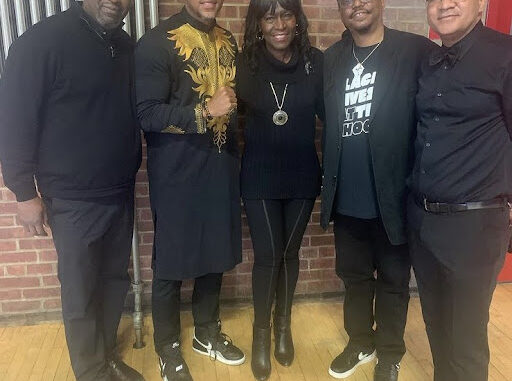
Black Solidarity Day is a decades-old tradition that originates from Dr. Carlos Russell who intended for the day to be a “protest against the intensifying repression that threatens the very existence of Black people in America.”
Russell was inspired by the Broadway play titled “Day of Absence,” in which the Black residents of a Southern town disappear for the day.
Their disappearance highlights to the town’s white residents the large extent that they depend on Black people in their lives and the direness of a world where Black people don’t exist.
The first Black Solidarity Day was held in 1969. Black people were asked to remain home from work and school and boycott commercial spending. The day occurs on each Monday before Election Day as a timely reminder to Americans about how issues on the ballot affect Black people in America.
First-year student Josmely Magarin attended her first Black Solidarity celebration with New Paltz and explained the importance of it.
“When people of color and supporters withdraw from any daily activities, they peacefully object to the racism and injustice going on all around the world and to speak about future plans and political power,” said Magarin.
Nov. 1 marked the 50th year Black Solidarity Day was observed at SUNY New Paltz. Events affiliated with the school have been taking place since 1971.
“SUNY New Paltz encourages all students to observe Black Solidarity Day as they see fit, and each year hundreds of students do so. The College has resolved that no tests, quizzes or graded material of any kind should be issued or due on the first Monday of November, and that students who provide their professors with prior notification of their intention to stay home in observation of Black Solidarity Day will not be held accountable for this absence from normal class activity,” a statement on the school’s website reads.
Hundreds of students participate in Black Solidarity Day each year.
This year’s Black Solidarity Day was an especially important one for members of the SUNY New Paltz community who are unhappy with the administrative treatment of Black students.
It also includes a consistent lack of funding and support for the Black Studies department. As well as administration excluding the Black Studies department or any Black faculty members from being originally involved in the installment of the Sojourner Truth statue on campus.
There are multiple ways to observe Black Solidarity Day in addition to staying home from work and school, such as buying something from Black businesses and reflecting on the important role that Black people play in our communities.
This year at SUNY New Paltz, students waited outside the Atrium at 10:30 a.m. for buses to drive them to the Newburgh Armory Unity Center, a community center where New Paltz’s Black Student Union was hosting this year’s Black Solidarity Day celebration.
Presented as “The Black Renaissance,” the Black Student Union requested for students to join them for a “day of love, laughter, and celebration,” and instructed them to adhere to the day’s dress code by wearing all black clothing.
Black Studies Professor Anthony Dandridge said the theme, which celebrates Black creativity, felt “therapeutic.” He says, “As we seek to ease out of a global pandemic that has disproportionately affected Black life, this move to gather, talk, and share a meaningful moment, was nothing less than a much-needed celebration.”
The day was a celebratory one that overflowed with music, shared knowledge and dance.
Students heard from speakers, like Interim Chair of Black Studies at New Paltz and Pastor at Christ Temple Baptist Church, Wendon McWilliams, who discussed with students the importance of Black voices being heard.
McWilliams also highlighted the importance of signing up for Black Studies courses at New Paltz and that the administration should be supplying students with the correct resources to take these courses.
Students attended workshops held at different stations on topics like the struggles of being a first-generation college student, how to care for natural hair and a space to learn about the history of, and write one’s own rap.
There were performances by Urban Lyrics, a spoken word group, and Culture Shock, a dance team.
New Paltz’s Golden Roots, the school’s Afro-Cultural dance team, performed a dance at the event. Another student performed a poem.
Students ate delicious meals from Cheryl’s Fried Fish & Soul Food to close out the event. They got to know each other over some hearty food and conversation, after experiencing a day of unity they’ll never forget.

